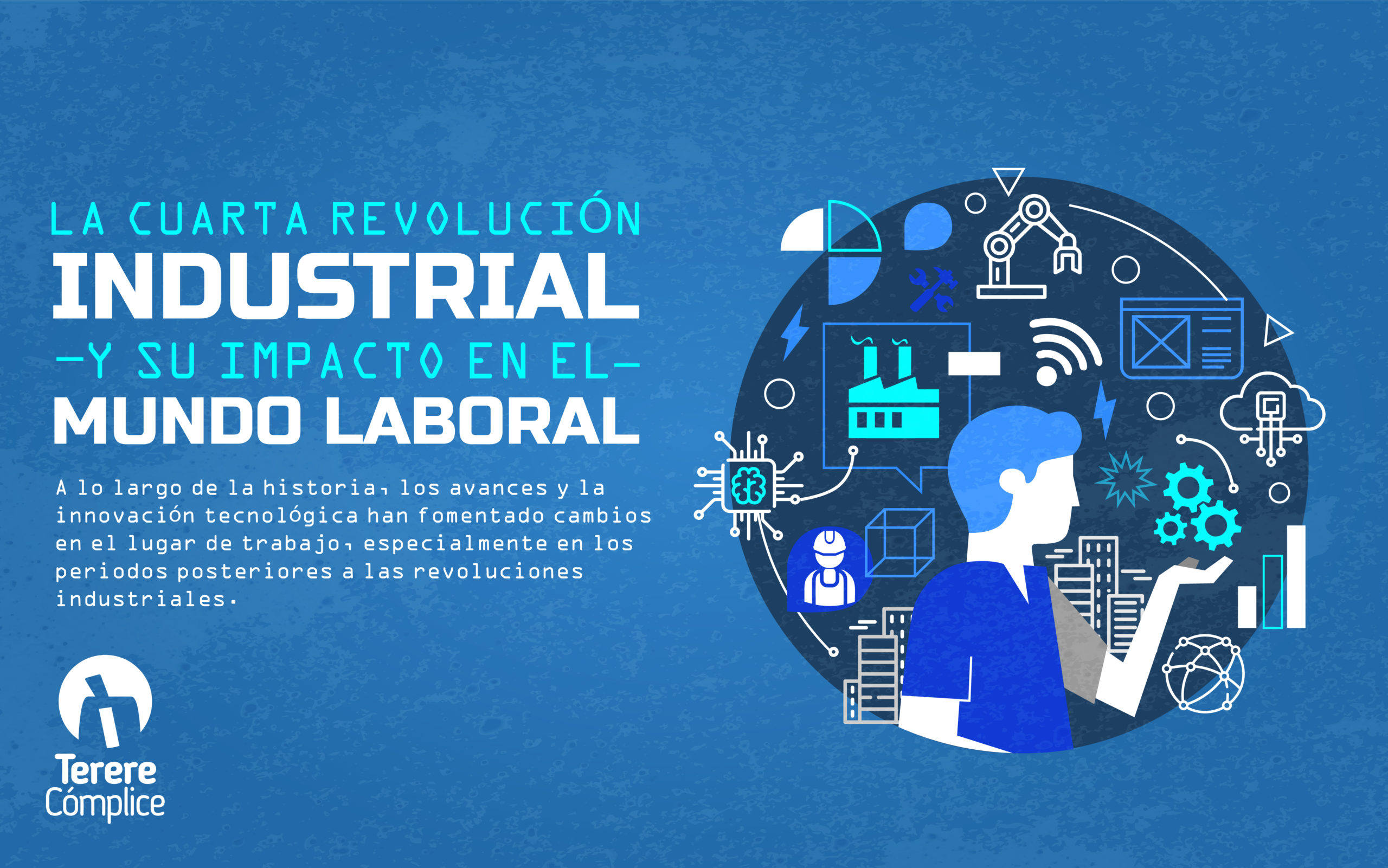
Special series by Terere Cómplice “The future of work and the jobs of the future”
By Claudia Pompa.
The first industrial revolution used the power of water and steam to mechanize production. The second used electrical energy to give rise to mass production. The third industrial revolution used information technology and electronics to automate production. Currently, we are in the middle of the fourth industrial revolution (4IR), also known as the digital revolution, characterized by the fusion of the digital, biological, and physical worlds, as well as the growing use of new technologies such as artificial intelligence, robotics, cloud computing, 3D printing, internet of things (IoT), and advanced wireless technology.
The speed, scope and systemic impact of these transformations can help us understand why the 4IR is not merely the continuation of the third industrial revolution, but rather an entirely different phenomenon. The speed of current advances is historically unprecedented. Compared to previous revolutions, the 4IR is evolving at an exponential, rather than linear, rate. Furthermore, the changes brought about by the 4IR are disrupting almost every industry around the world. The scope and depth of these changes herald a transformation of production, management and governance systems.
The political, social and academic debate over the effects of the 4IR has produced two great schools of thought: on one side, those who believe new technologies will create new jobs as human beings adapt to innovation; and, on the other, those who believe that technological advances will destroy jobs and displace workers who will not be able to keep up with the rapid changes.
We need more research into the effects and impacts of technological advances on the workforce, particularly in developing economies with significant informal labor sectors such as Paraguay.
Those who believe that new technologies can enhance human performance in the workplace argue that, just like previous revolutions, 4IR could potentially raise global income levels and improve the quality of life of millions of people all over the world. Until now, those who have benefited the most have been those consumers who could afford to access the digital world; technology has made possible new products and services that have increased their efficiency and everyday well-being.
On the other hand, those who believe that new technologies have triggered a “race against the machines” argue that the 4IR could generate even greater inequality, particularly due to the potential to disrupt labor markets. Advances in automation will lead to machines replacing human workers in all economies and the resulting worker displacement could widen the gap between the profitability of capital and that of labor.
So far, however, the evidence remains inconclusive. While some studies indicate that 47% of jobs in the United States and 59% of jobs in Germany are at risk of being automated or replaced, other researchers argue that these estimates are exaggerated and that the real levels of automation and substitution will be much lower, around 9% and 13% respectively. These studies caution against confusing ‘automation potential’ with ‘real job losses’. Just because plans to replace humans with technology to carry out certain tasks are technically possible does not necessarily mean they will be implemented. In many cases, there are legal and ethical obstacles that could prevent such replacement or at least substantially hinder its progress. In other instances, substitution may not even be economically feasible. However, even if there are no such obstacles, workers could adapt to a new division of labor between machines and humans by changing tasks.
These differences have arisen out of a broader debate regarding the impact of technology on the labor market: will jobs be destroyed or simply altered? There will still be a need for human labor to develop and implement worker-displacing technologies, as well as to maintain and repair them. Moreover, these technological advances will continue to open up new markets and create new jobs. Although communication and routine tasks that do not require direct person-to-person interactions will probably be the most easily replaced through technological advances, jobs that require human interaction, creativity, adaptability, decision-making skills, and social skills will be the most difficult (if not impossible) to automate.
In general, we need more research into the effects and impacts of technological advances on the workforce, particularly in developing economies with significant informal labor sectors such as Paraguay. Developing a better understanding of these trends at the global level, but with a local focus, will allow us to better understand the needs of our workforce, and to design and implement public policies that can respond to these needs and generate employment strategies to promote competitiveness and support the level of economic growth that we need as a country.
Cover Image: Lissette Salguero
